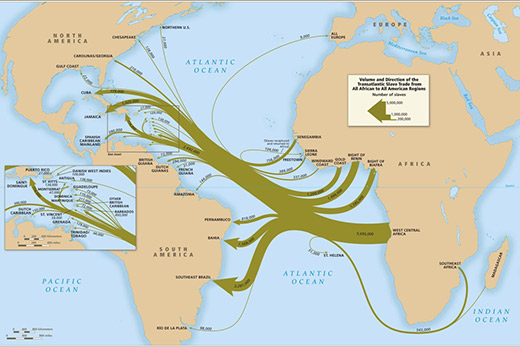
The Economics of the Atlantic Slave Trade
During the Atlantic slave trade about a quarter of the crew of each slave ship died on the voyage. The Life expectancy of a European who went to the West Indies was only five to ten years. Some Europeans tried to set up plantations in Africa but most failed because Europeans who managed the plantations had a higher death rate in Africa. A lot of the land close to the coasts was not good enough to plant sugar cane.
The decision to locate plantations in the Americas was because the land was available. The Europeans being sent to these plantations to work were political prisoners, convicts and unfortunate people. At the time it was generally considered cheaper to buy a slave from Africa than to bring people from Europe. By about the 1770s, plantation owners began to offer incentives for female slaves to have children instead of always buying a new one from Africa. The price of slaves rose from about 1680 to the 1840s about five-fold. The total price of a slave delivered to a plantation in the Americas was a combination of payment made to the African merchants who brought the slaves to the coast from their place of capture, the European merchants who brought them across the ocean and those who performed the enslavement.
The rising price of slaves forced plantation owners in the Americas to encourage natural growth within their own slave populations. This reduced the demand for slaves from Africa.


